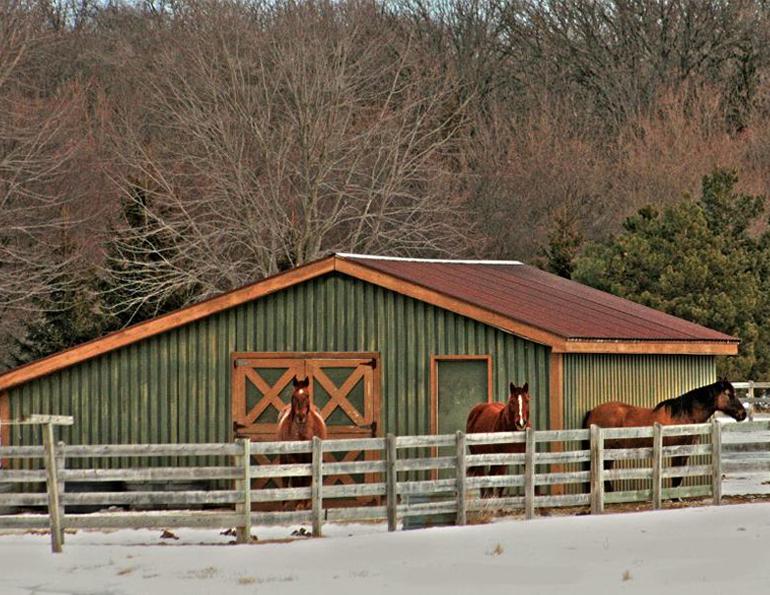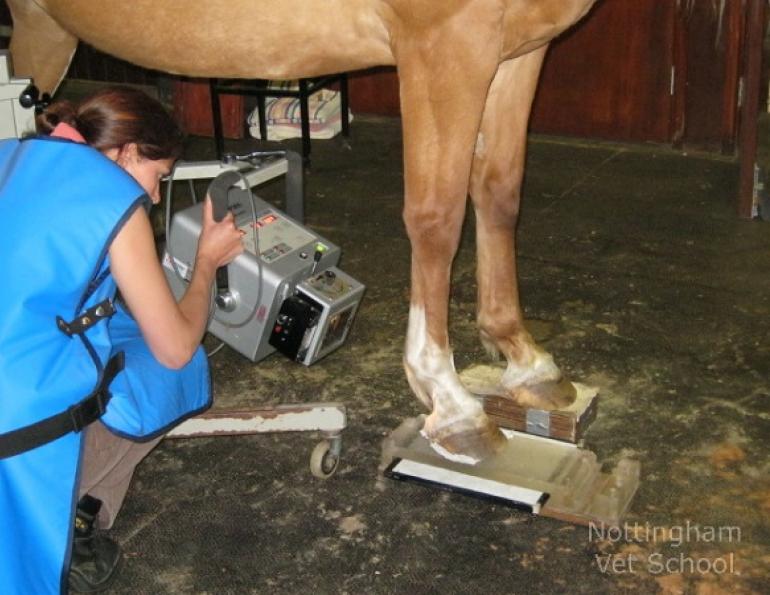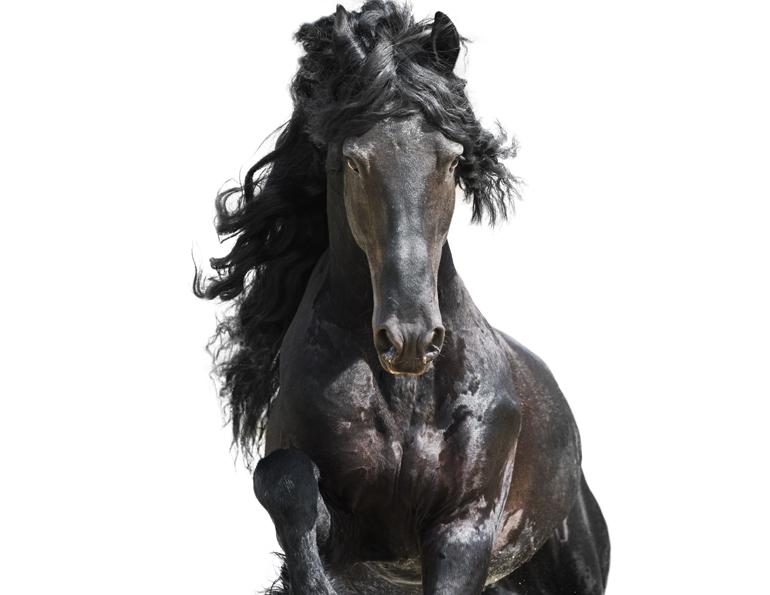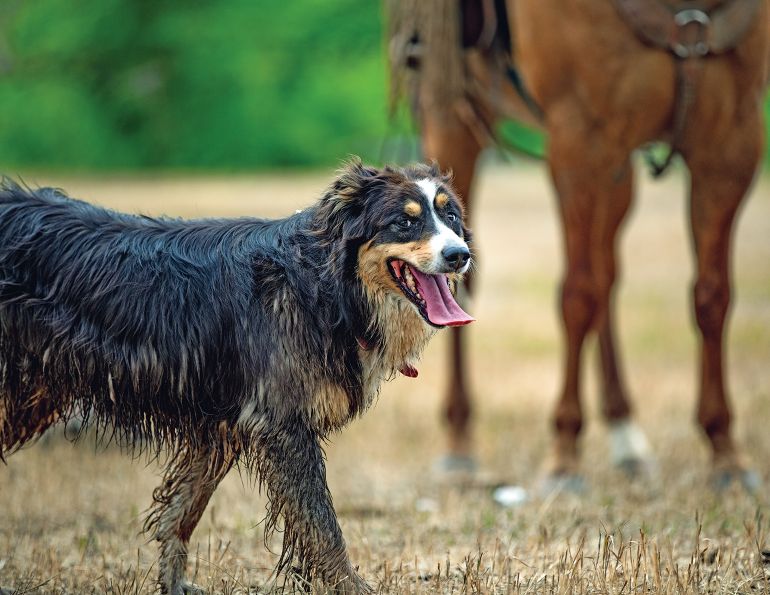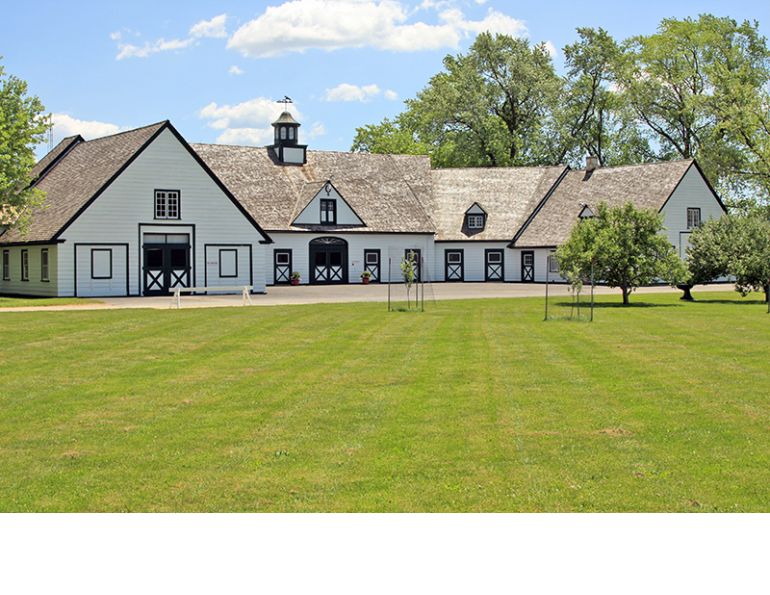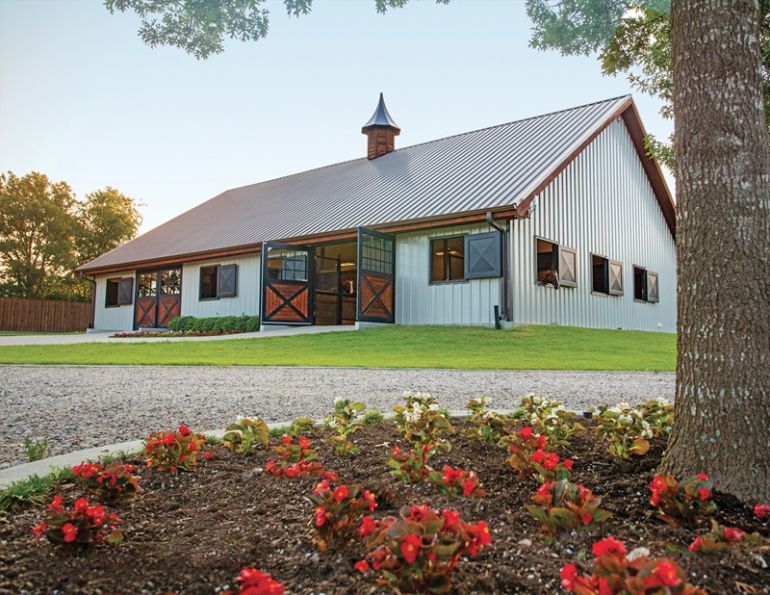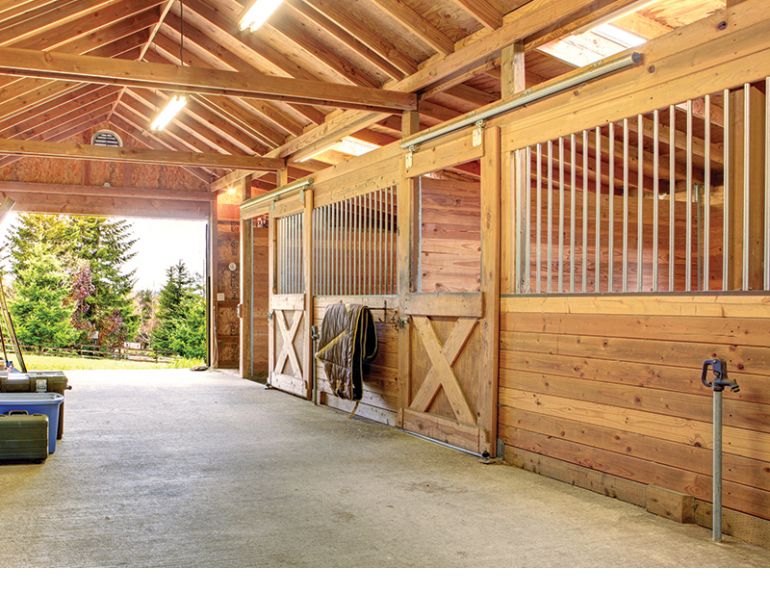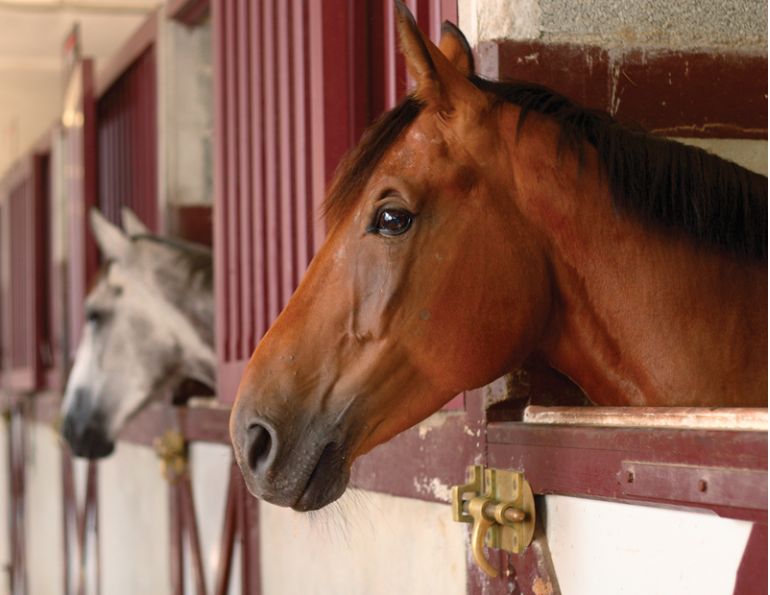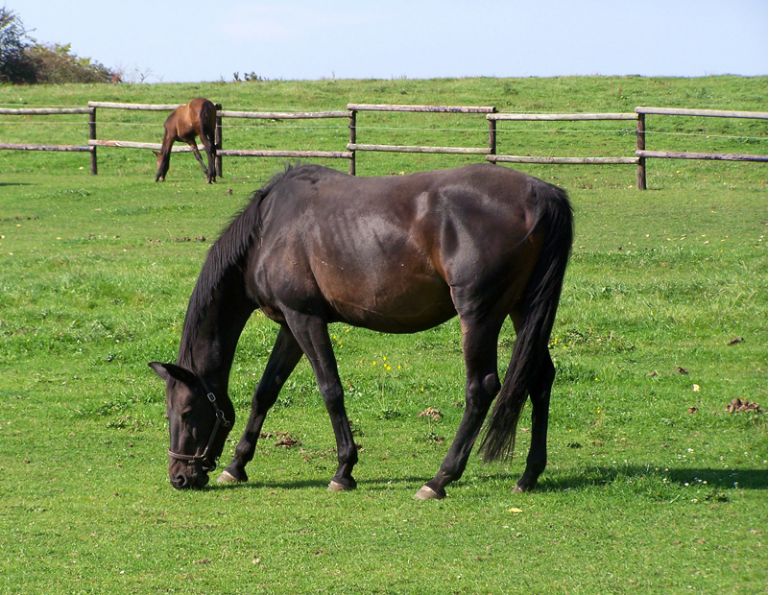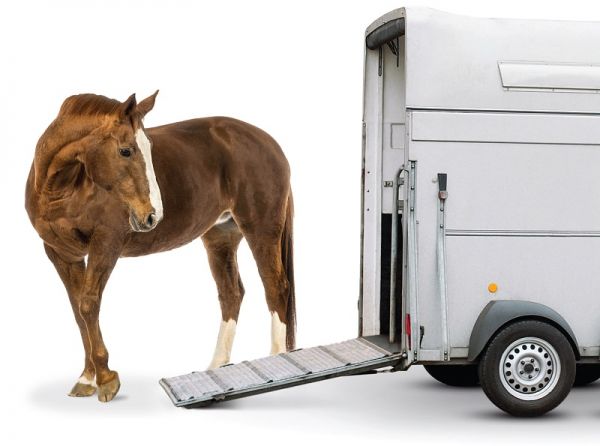By Jess Hallas-Kilcoyne
De-icing water buckets, hauling water by hand, and pushing heavy wheelbarrows through deep snow are just a few of the things that many Canadian horse owners have to look forward to in the winter months. But we do them willingly to ensure the good health of our horses during a season that, along with its rain, snow, and freezing temperatures, also brings equine health issues such as thrush, mud fever, colic resulting from dehydration, and respiratory illnesses.
The benefits you will reap by winterizing your barn will be twofold: first, the difficulty of your winter barn chores will be greatly eased; and, second, you can take even greater satisfaction in the knowledge that your horse is receiving the best seasonal care you can provide.
Assess Your Barn’s Structural Integrity
Begin with a thorough cleaning of your barn’s interior, checking as you go for any repairs that might be needed, such as rotting stall boards or sticky door latches.
Then, inspect the outside of your barn and the roof for leaks, holes, and any other damage. While you’re up on the roof, clear the eavestroughs of any accumulated debris. You should also know the weight bearing capacity of your roof. These days, most roofs are built to shed, but be prepared to clear it off manually in the event of a heavy snowfall.
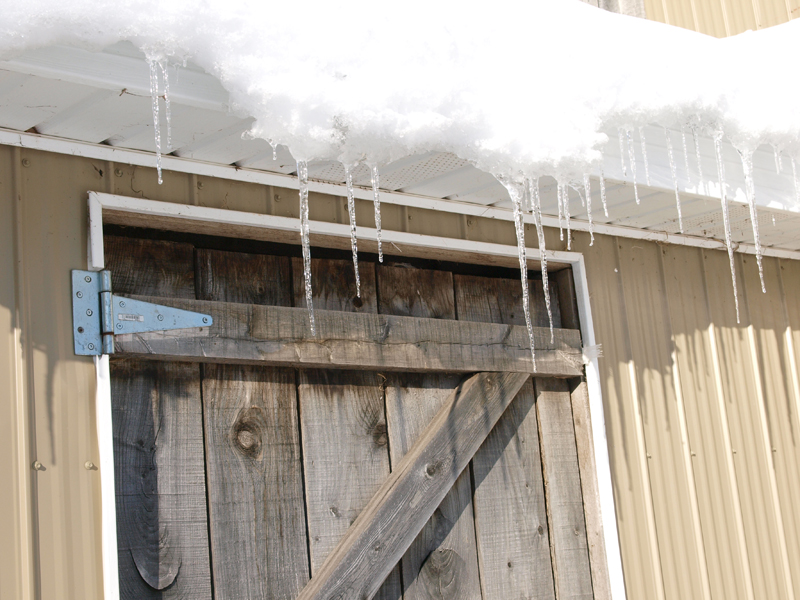
Know the weight-bearing capacity of your roof and be prepared to clear it off in the event of a heavy snowfall. Photo: Pam MacKenzie Photography
In colder regions, frost can cause your barn’s foundation to heave and become unstable. Check that the foundation was laid according to the building codes in your province, and install eavestroughs and adequate drainage around the barn’s perimeter to divert water away from the base of the building, thus minimizing the risk of frost formation.
Related: Tips for Keeping Horses During Extreme Winter Weather
Fall is also the time to check your fencing for broken rails, rotting posts, and any other repairs needed.
Check Your Water System
“The single most important thing to consider in the winter time is water,” says Darin Kennedy, owner of Darden Equine, a boarding and equine rehabilitation centre in Coldwater, Ontario.
Inspect your water tank for leaks and major rust spots, especially at heating element inserts. Make sure that the pipes do not leak and are rust-free, and that the insulation is still intact. If your barn’s water supply comes from a well, service your well pump and check the well house insulation, applying heat tape as needed.
To help prevent frozen pipes, waterlines should be buried in the ground at a minimum depth of four to six feet according to what part of the country you live in, and all above-ground pipes should be contained in an insulated space.
“Make sure that all exterior hose bibs are properly drained and shut off and ready for the cold months,” says Stephanie Stone, owner of Stonewood Construction Management Inc. in Innisfil, Ontario.
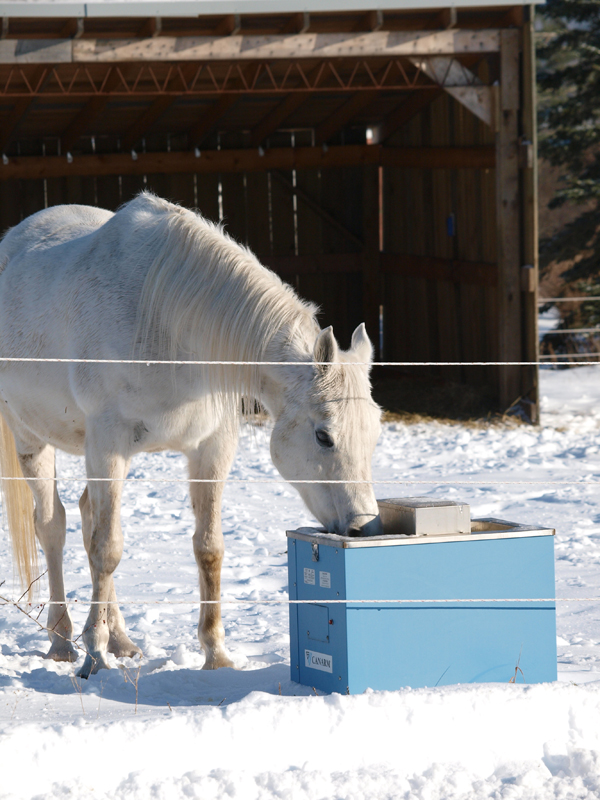
Ensuring adequate water consumption for your horse through the colder months can be difficult, but it’s essential for his health. Photo: Pam MacKenzie Photography
Another frozen pipe preventative measure is to install a water heater. This option has the added benefit of providing the horses with warm water, encouraging them to drink more and saving you from regularly de-icing their water buckets.
A 1000-pound horse requires approximately 20 to 30 litres (four to seven gallons) of water per day and prefers to drink water at a temperature between 45 and 65 degrees Fahrenheit (7 to 18 degrees Celsius). If the drinking water provided is colder than this, water consumption will likely decrease, with a correlating increase in the odds of the horse developing colic.
Related: Winter TLC for Horses with Arthritis
“Last year I hooked up an in-line hot water tank and heated the water before it actually went out to the waterers in the paddock,” says Kennedy. “The horses drank more water and the waterline didn’t freeze at all.”
Heating
Depending on what part of Canada you inhabit, a heated barn may not be necessary, but a heated tack room is a wonderful feature in any barn. “The preferred system is in-floor heat,” says Stone. “If in-floor is not a feasible option, there are many types of alternative electrical heaters. Baseboard heaters are not an option I would personally recommend due to the danger of items being placed against them.”
“In some cases there is a need for supplementary heat within the stable (e.g. if the number of horses in the stable is low in the really cold months),” she continues. “There are many types of agricultural heaters that can be installed. These would be the best choice rather than the typical construction type heaters.”
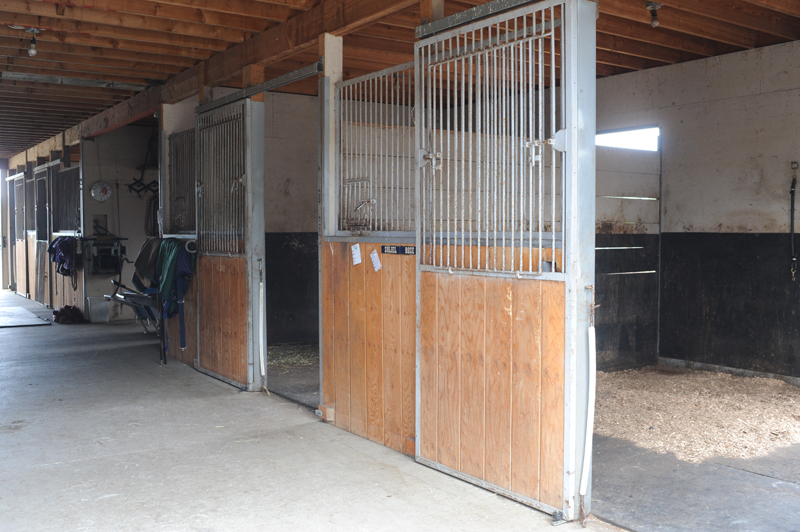
Winterizing your barn begins with a thorough cleaning of the interior. As you clean, check for things like rotting stall boards or sticky door latches. Photo: Robin Duncan Photography
The optimum temperature for horses can be anywhere from 10 to 20 degrees Celsius.
“Generally in the winter time it’ll float around 10 to 12 degrees Celsius,” says Kennedy of his heated, insulated barn. “I have a supplement heater in the barn to make sure it stays at a good temperature, as well as [ceiling] fans to circulate the air and make sure that the warm air is always pushed down.”
Any heated space should be insulated. Make sure that the heat stays in your heated tack room or barn by caulking cracks and weather-stripping doors and windows.
“Coming into the fall, I go around to all the doors and put neoprene seals on,” Kennedy says. “I make sure they’re in good repair and they’re sealing properly.”
Related: Winter Watering Options for your Horse Farm
Ventilation
Dampness in the air, or high humidity, not only contributes to respiratory illnesses and encourages the growth of bacteria and fungus, but in combination with high temperatures it can create condensation which can rot your barn, ruin insulation, and rust metal siding and roofing. You’ll know if your ventilation system needs to be reassessed if you notice condensation forming on the windows.
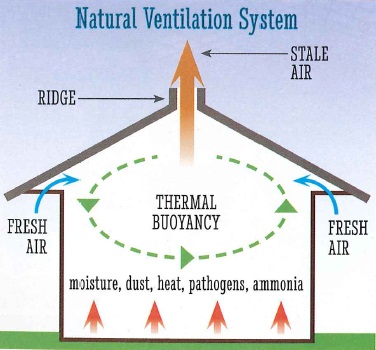
A good ventilation system replaces warm, moist air with fresh air, removing contaminants that damage respiratory tissue such as dust, pathogens, and ammonia.
A good ventilation system replaces warm, moist air with fresh air, ideally in the winter at a rate of 12 to 19 litres per second (25 to 40 cubic feet per minute) per horse. It also removes air contaminants that damage respiratory tissue such as dust, pathogens, and ammonia, and minimizes the draftiness of the barn.
Natural ventilation systems utilize wind and thermal buoyancy to move the air. Warm air inside the barn rises, carrying with it moisture, ammonia, dust, and pathogens, and is exhausted through a higher outlet (typically a chimney or vent in the roof). The displacement of air from this exhaustion causes fresh air to be drawn into the barn through the inlets, where it mixes with the warmer air inside. Heat generated by the horses, among other things, warms the air further, and this warm air rises toward the outlet, taking moisture and air contaminants with it.
A mechanical ventilation system uses a fan to suck warm, moist air up like a vacuum. Some barns also use an air duct system which consists of a motorized shutter that allows air into a duct running the length of the barn with regularly spaced holes to allow for even distribution of fresh air.
When it comes to knowing what ventilation system will work best for your barn, Stone recommends relying on an agricultural engineer to design the best system using both exhaust fans and passive air flow options.
“In cold months, contain the rooms that have supplementary heat sources by ensuring that the doors remain closed,” Stone advises. This seals in the heat, thereby reducing the amount of condensation produced.
She also suggests that you check the functionality of the windows to allow fresh air in, and to make sure that the attic has proper ventilation. You can help improve the ventilation in the attic by stacking your bales so that a gap of at least 12 inches is left between the hay and the walls, giving the air space to circulate.
Related: Preventing Fall and Winter Colic
Dust Control
While an appropriate ventilation system will go a long way toward improving the air quality in your barn, there are other ways to minimize dust and pathogens in your barn. One of the most important sources of dust and pathogens is stall bedding.
There are a multitude of bedding options out there, from straw and wood shavings, to paper, peat moss, and new synthetic beddings. Regardless of the option you choose to use, the bedding material should be dust and pathogen-free, absorbent, and provide your horse with a soft, supportive bed.
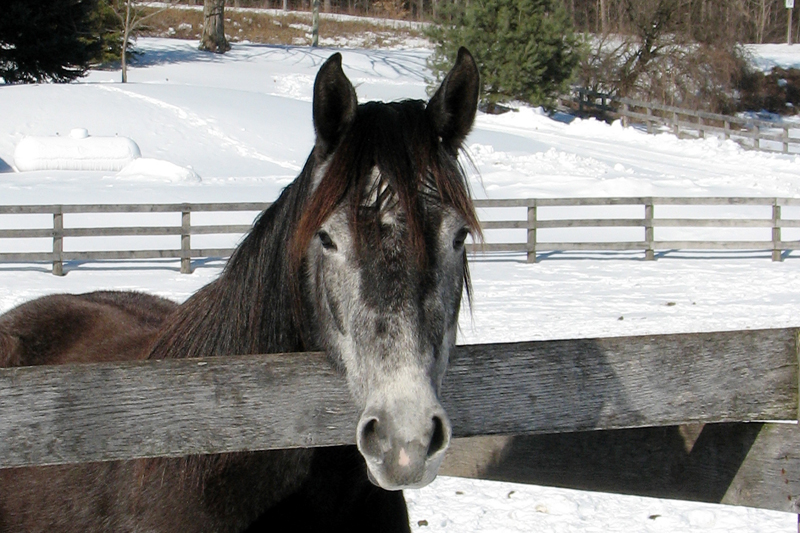
Do your barn chores while the horses are outside so that they aren’t inhaling the dust and other air contaminants that your mucking, sweeping, and raking churns up into the air.
“I have access to a very clean straw, from winter wheat,” says Kennedy. “Winter wheat is a softer bedding and absorbs moisture a lot better than spring wheat. It’s not dusty straw.”
“If you’re using dusty products, you have to be concerned,” he continues. “But, if you keep your barn clean and you keep it dusted, you shouldn’t have a problem.”
Kennedy also recommends rubber stall mats, which provide extra cushioning for joints, reducing the amount of bedding needed and thus cutting down on dust. “They cut labour down by approximately three-quarters,” he adds.
Minimize the amount of dust and pathogens your horses inhale from the bedding by turning them out while you muck the stalls. You can also give the barn aisle a very light spray with the hose before sweeping to keep the dust down.
Stall products containing zeolite or diatomaceous earth help absorb ammonia which has harmful effects on your horse’s respiratory system, and can also reduce odors greatly.
Related: Planning Your Horse's Run-In Shed
Snow and Ice
You’ll want to clear snow from your driveway, walkways, and paddock gates, but “ensure that you have the best plan in place for snow removal,” Stone advises. “Piling snow along the side of a building is not a good solution come the thaw season [if you want to avoid flooding your barn come spring].”
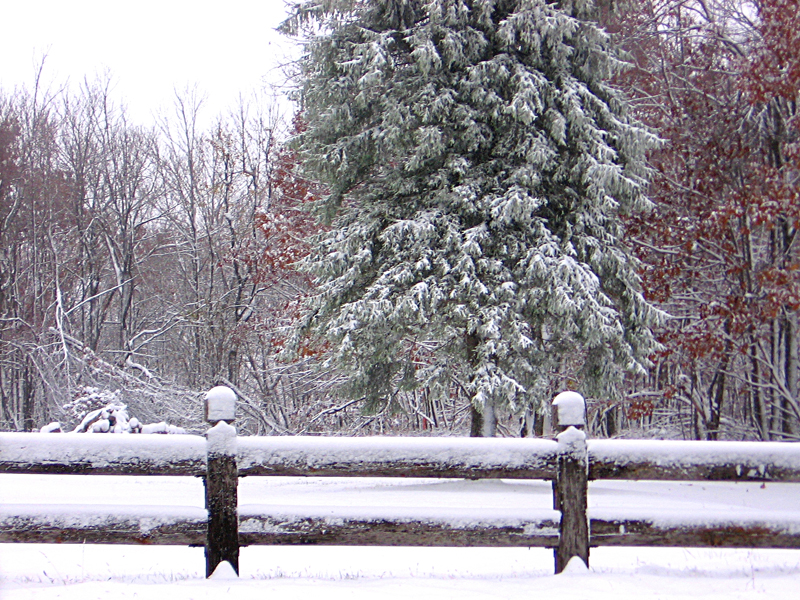
Check your fencing for broken rails and rotting posts and do repairs before the first snowfall.
Spreading sand, rock salt, wood chips, or a mixture of all three, over icy barn aisles and pathways from the barn to the paddocks and your arena can provide you and your horse with better traction for safe footing. You can even throw it over slippery areas in your horse’s paddock.
To minimize the risk of your horses tripping over poor footing, Ontario veterinarian Dr. Robert Wright suggests smoothing out any uneven ground before it freezes. Alternatively, used bedding or straw can be put down to fill in any depressions in the ground once it’s frozen.
Dr. Wright also recommends driving over icy paddocks with a four-wheel-drive truck or tractor to break up the slippery ice before turning your horses out.
Mud Management
Wet, muddy footing can lead to health concerns such as thrush and mud fever. High traffic areas around water tubs, feeders, and gates are particularly susceptible to becoming muddy messes.
While laying concrete in these areas is the best way to prevent mud, a quicker and less expensive option is to scrape your paddock.
“In the fall, I clean the paddock footing out completely,” says Kennedy. “I have a clay base so I don’t have to worry about mud later on in the season because the clay base is so hard and it maintains a good, solid footing.”
“Going into the extremely wet fall, we keep layering straw on the footing,” Kennedy continues, “because the straw will weave on itself and make a good base. That way, the horses aren’t walking into mud in the main traffic areas.”
According to Dr. Wright, good, mud-free footing can be achieved by removing the top eight inches of paddock and replacing it with a four-inch base of a sand and gravel mixture, followed by landscape cloth, and then another four inches of the sand and gravel mix. This is best done no later than early fall.
For a quick fix when the weather is already wet, dig out the muddy area as best you can and fill it in with 5/8-inch size limestone screenings.
Rodent Control
With hay bales to nest in, plenty of grain to feast on, and an abundance of chewing material (blankets, saddle pads, wood) for entertainment purposes, your barn is an appealing home for a rodent looking to ride out the winter months. But mice and rats can carry and transmit parasites and diseases, contaminate your horse’s feed, and wreak havoc on your barn’s electrical system by chewing through wire insulation and exposing the live wires, putting your barn at increased risk of fire. There are two main components to keeping rodents at bay: prevention and eradication.
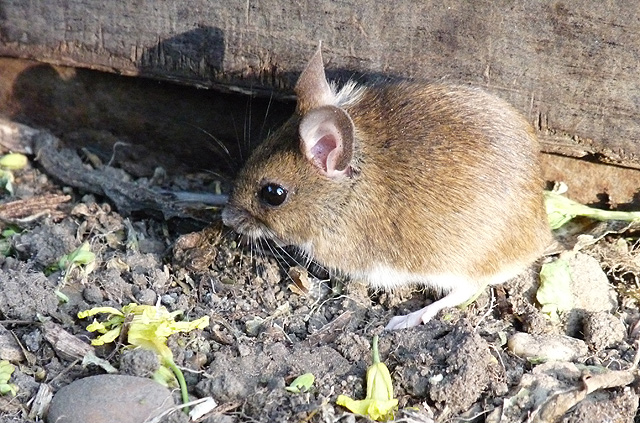
Rodents might view your barn as an appealing winter home, but mice and rats can destroy equipment, contaminate feed, and chew through electrical wires. Photo: Google Images/Zorba the Geek
Make your barn as inhospitable to rodents as possible by keeping it tidy and clutter-free and storing your grain and similar feed in rodent-proof containers. Seal up any openings measuring one quarter-inch or greater, such as cracks in the foundation and gaps around pipes. In a pinch, steel wool can be used to block these openings temporarily.
The preferred method for removal of rodents is trapping; the use of poisons is recommended only as a last resort. Rodenticides, while widely available at most local hardware stores, must not be used in any place accessible to horses, dogs, cats, or small children. Additionally, the poisoned carcasses must be collected and disposed of as promptly as possible to protect pets and other animals from consuming them.
A little effort this fall to realistically assess your barn, including water, heating, and ventilation systems, footing, and pest control, can go a long way toward giving your horse a healthier, happier home.
Preparing for the Worst
In the event that you become snowed in, make sure you have hay and feed stockpiled to last for at least two weeks. Power outages are not uncommon, and it’s a good idea to have a few five to ten-gallon containers of water stored away inside where they won’t freeze, just in case. You also might want to consider investing in a small generator that can provide power to briefly run the barn lights or water pump. Make sure your first aid kit is up to date, flashlights are handy, and your barn’s fire extinguisher(s) are in good working order.
For more information and specific concerns about winter horse care and stable management, consult with your equine veterinarian.
Related: To Rug or Not to Rug
The information in this article is for information purposes only and should not be relied upon as a substitute for professional veterinary and/or medical advice. No liability will accrue to the publisher or author of the article in the event that a user suffers loss as a result of reliance upon the information.
Main Article Photo: eXtensionHorses/Flickr



